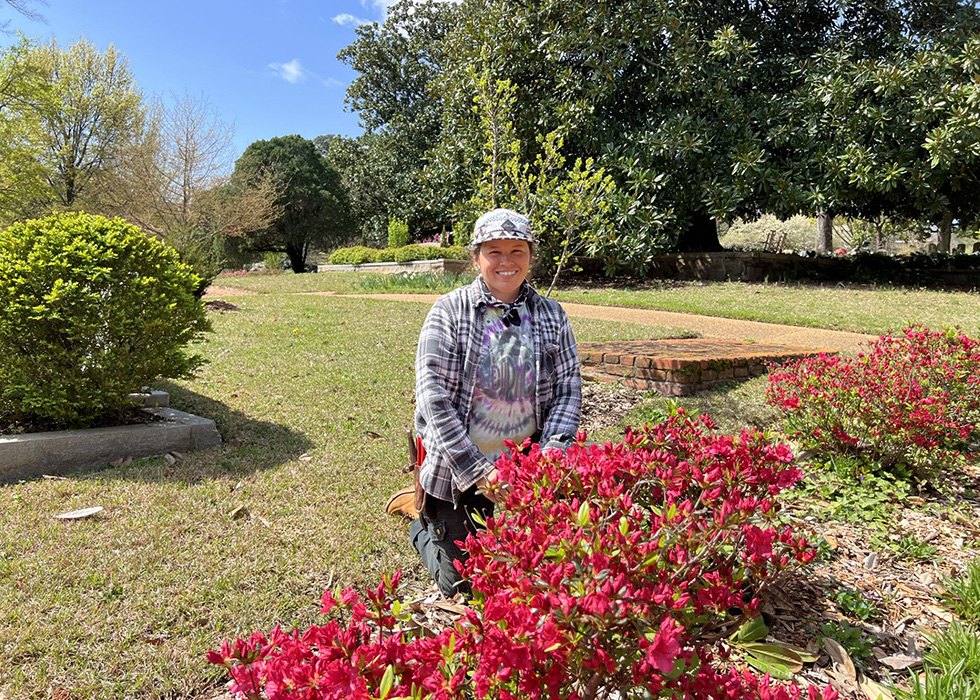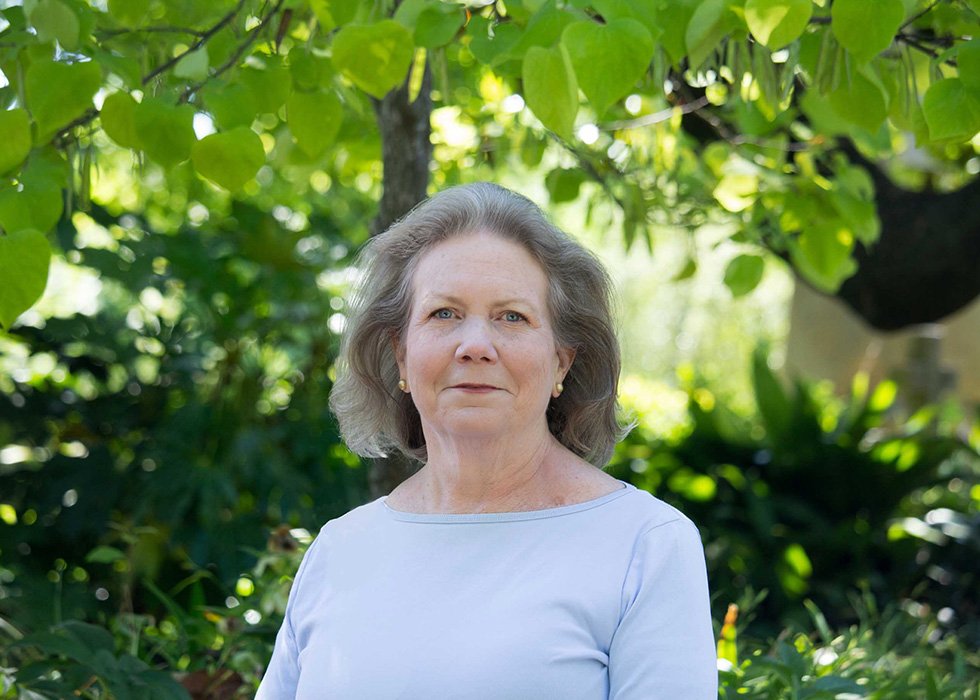
Iris in Oakland Cemetery’s Gardens: From Survey to Sale
It may surprise some to learn that Historic Oakland Foundation’s preservation efforts include flowers shrubs and trees in addition to headstones and other hardscaping. As I approach my fourth year as a member of Oakland Cemetery’s preservation team, I am still learning and am fascinated by my coworkers’ projects. During the Iris Rhizome Sale this June, I decided to learn more about iris and why, in June, the gardens team goes iris-crazy.

Oakland Cemetery is home to a large number of heirloom and newer iris varieties, many of which can be seen in bloom in late March and April. The garden staff uses historic photos and other records of historic plantings to plan landscaping at the cemetery. They have added over 100 historic varieties from the late 18th and early 19th centuries to the gardens.
Areas like Jewish Hill, Greenhouse Valley, and around Bobby Jones have iris beds of all colors and sizes. In many cases, iris were chosen because of their overall beauty and hardiness in our climate. Historic varieties are not as robust and have much smaller rhizomes than the modern hybrids. This underscores the importance of the maintenance required to keep these beauties happy and healthy.

Iris care at Oakland begins with their bloom in spring when the gardens team goes out on the grounds to identify, catalog, and assess iris beds. Historic Oakland Foundation is currently working with an outside company to help build out a location-based database for plants and monuments. Collecting data such as variety names, when plantings happen, where iris are overcrowded, and what the soil quality is like all aid in keeping Oaklands gardens pristine. Once identified and assessed, gardens staff can determine which iris need dividing or some extra attention.

Dividing iris rhizomes is integral to their health. As iris multiply, they can become overcrowded and fight for nutrients leading to fewer and smaller iris flowers. Taking advantage of this necessary process, the gardens team allows the public to purchase a portion of the excess rhizomes. This means that a different assortment of varieties may be offered each year. Dividing iris also allows the gardens team to turn and treat the soil if needed.
Iris rhizomes that aren’t resold or replanted are organized by variety and planted with ample spacing on empty lots in a fresh soil bed where they can reproduce for future rhizome sales or be planted elsewhere on the grounds at a later date.
Sean Diaz is a member of Historic Oakland Foundation’s preservation team. He’d like to extend a special thanks to those on the gardens team who allowed him to pester them with a thousand questions.



